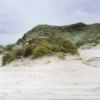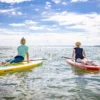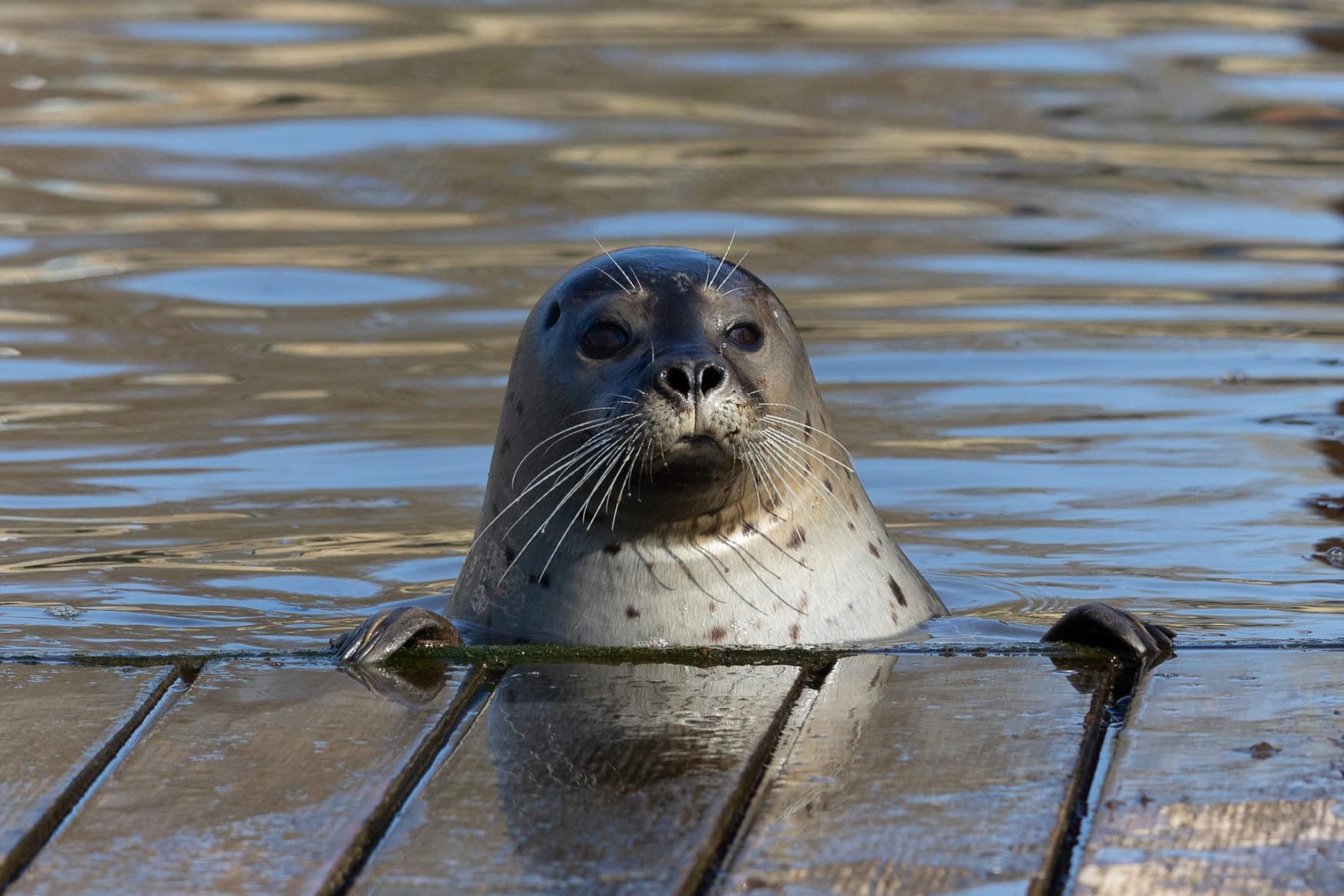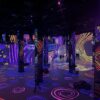The North Sea is teeming with life and animals – and not all of them are visible at first glance. From clever octopuses and elegant rays to curious seals: in the aquariums, animal stations and nature centers along the coast, you can experience fascinating sea creatures up close.
Illusionist with eight arms – the octopus at the Sylt Aquarium
Twenty-five display tanks, one million liters of seawater, a wave machine and current simulation – the Sylt Aquarium in Westerland brings the world of the oceans under one roof. An absolute highlight: the two glass tunnels in which rays and school sharks majestically swim their laps. Suddenly a stingray appears, gliding silently past – as if it were a visitor from another world.
Although the aquarium is home to many tropical and subtropical fish, exotic species occasionally find their way into the North Sea. “At some point, they’ll come to us!” says Stefan Köster of the Sylt Aquarium. Rays with a diameter of one and a half meters and brown sharks almost two and a half meters long are impressive inhabitants of this underwater world. And what about rays in the North Sea? Not a myth – their egg capsules, known as “nixen bags”, can be found on the beach. With their ravioli-like shape and small tips, they almost look artistic. Sharks and even turtles have also been washed up on the coast of Sylt.

One of these turtles even made headlines: Found alive on the beach, it is now being prepared for reintroduction to the wild in the quarantine facility. “She is in perfect health,” reports Köster. It is not yet clear where and when she will return to the sea – presumably in France. Visitors cannot see the turtle, but they can see other fascinating sea creatures, such as seahorses, which are now turning up more and more frequently on North Sea beaches.
And then there is the master of disguise: the octopus. You have to look very closely to spot it. “You can’t see it at first glance – unless it’s stuck to the window,” says Köster. With its eight arms and countless suction cups, it not only holds on effortlessly, but also climbs skillfully through its territory. Favorite food? Crabs and mussels – it cracks them with impressive precision.
Perhaps its most ingenious ability is its talent for changing color. The octopus simply adapts to its background, blending into its surroundings and thus remaining hidden from prying eyes. “If you want to see it, you should look into the cave – that’s where it likes to hide best,” advises Köster.
A real octopus has not yet been discovered in the North Sea, but a curled octopus has already been identified. And squids also belong to the local underwater world. Who would have thought that the North Sea holds so many surprises
Sharks in the far north – A spiny dogfish in Büsum
The aquarium in Büsum has existed since 1918 and is now located at a new address directly at the fishing port. Where fishing boats usually dock, a Büsum fisherman caught an unusual catch: a young dogfish, which actually lives in warmer waters. “In recent years, however, they have been appearing more and more frequently in the North Sea,” reports Gerhard Gebauer, head of the aquarium. The animals apparently feel particularly at home around Helgoland with its rocky seabed. But this small shark was discovered right in front of the harbor – a genuine vagrant.
The newcomer is just 60 centimetres long, but it won’t stay that way. It is now swimming around in the 24,000-litre tank, together with cod, mullet, thornback ray and catshark. “The tope shark really does look like a shark,” says Gebauer, “whereas catsharks are often mistaken for other fish species.” The backdrop: a historic wreck scene with a replica stock anchor – a sight that certainly reflects reality. Fishermen pull such anchors out of the North Sea time and again, because nowhere else are there so many sunken ships on the seabed.

The life in the open water is exciting – mullet, sharks, jellyfish glide almost weightlessly through the basin. “The North Sea is a young sea in terms of geological history, with very different habitats,” explains Gebauer. Seagrass beds, kelp forests, rocky underwater landscapes – all of this is part of it. In Büsum, there is even a replicated mussel bed, populated by blue mussels, rock oysters and fascinating coelenterates. Equine crinoids and sea anemones stretch their tentacles into the water to catch passing prey – a sight more commonly associated with tropical coral reefs than the North Sea.
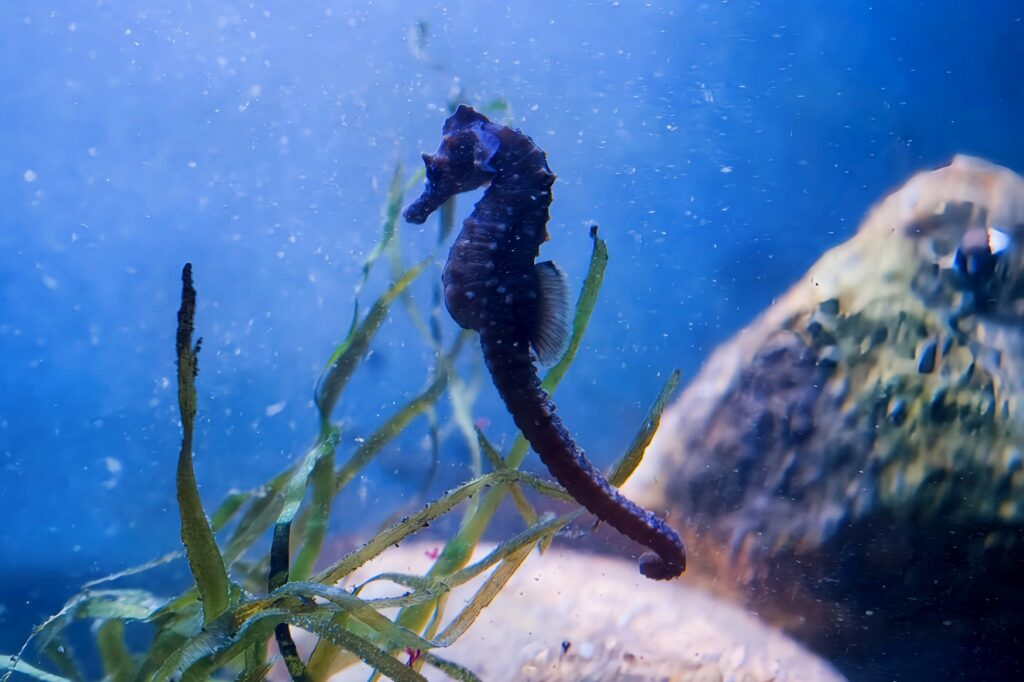
And then there are the rather unusual sea creatures with sonorous names: sea scorpions and dead mans’ fingers– both hidden deep in the crevices. “Some species are coming, others are disappearing,” says Gebauer, who sees the dogfish shark as a clear sign of climate change. In the past, this shark never went into the nets of local fishermen, but today it is happening more and more often. While some species, such as cod, retreat to cooler climes, new species are migrating north from the Mediterranean. A visible change that can be experienced up close in the Büsum aquarium – not only as a colorful show, but also as a living source of knowledge. “After all, that’s what we’re here for.”
Big-eyed predators – seals in the Westküstenpark
The Westküstenpark on Eiderstedt also focuses on local sea creatures. Eight seals live here in a family group, ranging in age from young pups to a 22-year-old veteran. Their natural behavior can be observed in their 1,200-cubic-meter North Sea water enclosure – while sunbathing, diving playfully or through the large underwater windows. The centerpiece of the park, the “Robbarium”, brings visitors as close to the animals as hardly anywhere else.
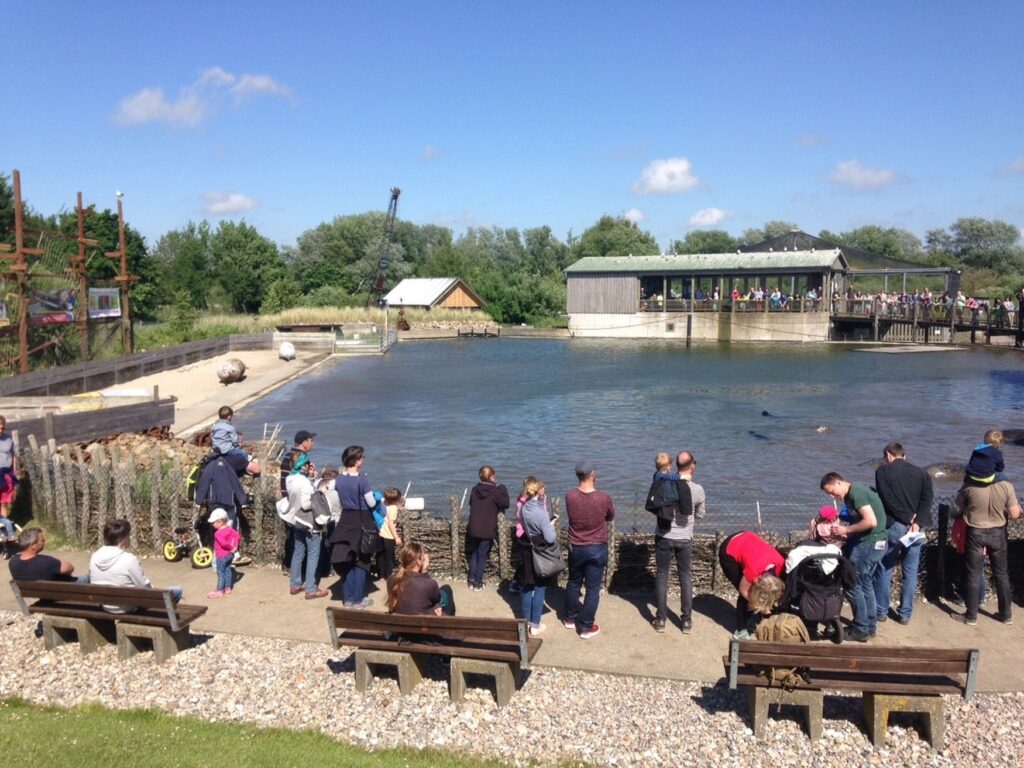
Those who want to get even more involved can take a look behind the scenes as “zookeepers for a day”. Adults and children help with feeding and caring, but without petting – “seals are predators with a proper set of teeth,” explains zoo educator Annika Witte. 120 kilograms of muscles and teeth that might find not only fish but also fingers interesting. But when the family unit has a new addition, there is a chance to get particularly close to the little ones.
In addition to the seals, the park is home to around 130 other animal species from around the world. Since its foundation in 1992, the Westküstenpark has focused on species-appropriate husbandry and modern nature experiences – including the opportunity to actively participate in animal care. A facility that imparts knowledge and at the same time enables very special encounters.
Young howlers and old hands – the special community at the seal center
At the Friedrichskoog Seal Sanctuary, not far from the Elbe estuary in southern Dithmarschen, everything revolves around rescued common and gray seals. Every year, around 200 young common seals are nursed here in summer and around 30 gray seals in winter until they are strong enough to return to the North Sea. But not all of them can be released back into the wild – some stay here forever. Mareike, Hein and Snorre are among the permanent residents, swimming their laps in a spacious habitat with 800 cubic meters of North Sea water. The facility was designed to resemble natural conditions as closely as possible, with sandy shores and sunny resting places.
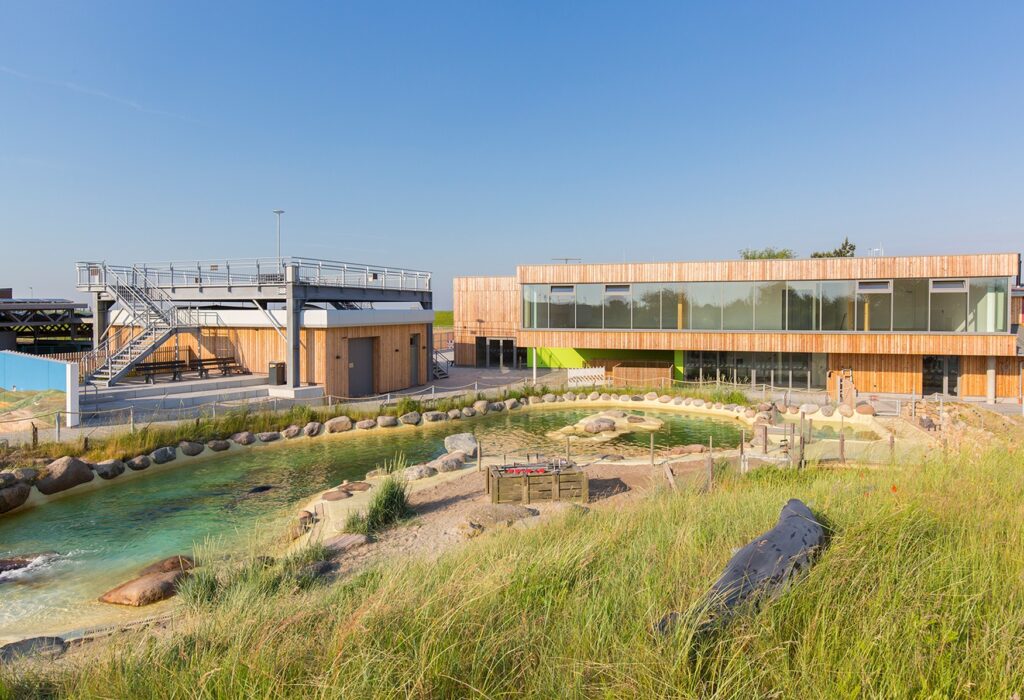
Hein, in particular, has long since found his favorite spot: right by the waterfall, where he gets plenty of sun. This behavior can also be observed in the wild, as sunlight helps seals produce vitamin D. Another typical seal habit is swimming on its back. This allows them to search the seafloor for food – a technique that can be easily observed through the large underwater windows.
Each seal has its own character. Mareike is considered particularly clever because she quickly grasps new exercises. Snorre, on the other hand, is the curious soul of the group, repeatedly swimming up to the window and eyeing the visitors. Who is actually watching whom here? In the wild, constant observation is essential for survival – a behavior that is also consciously encouraged at the center. An extra herring as a reward ensures that important instincts are maintained.
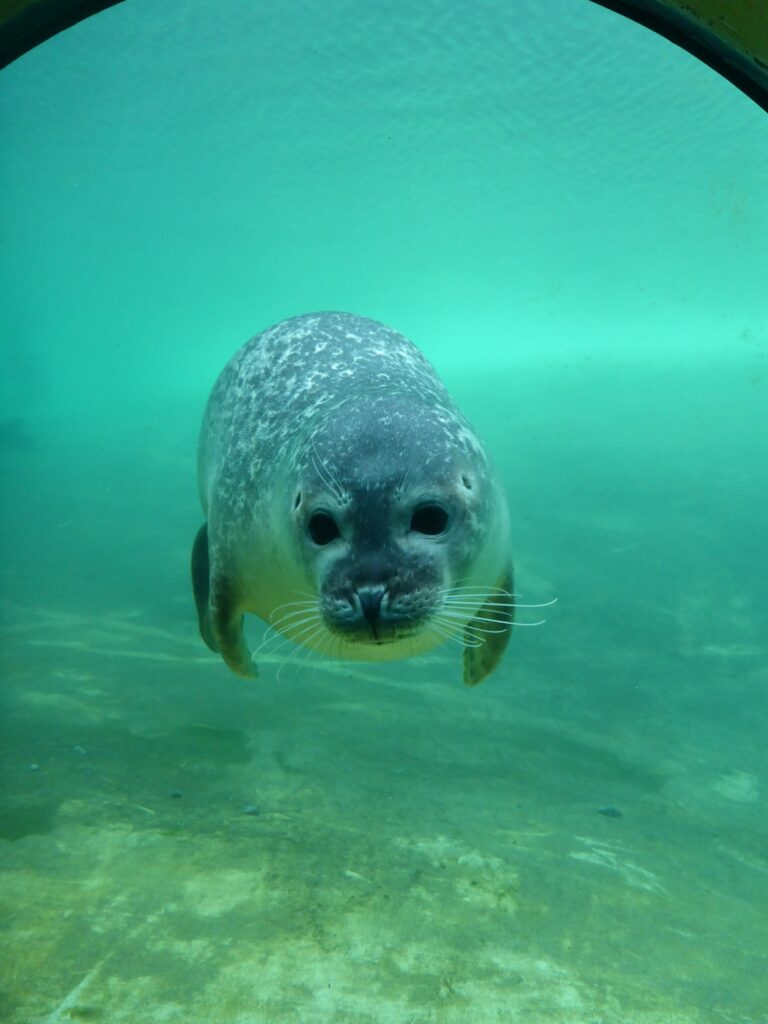
The daily feeding is much more than a show for the audience. It also serves to medically examine the animals and regularly check their health. The howlers and young animals have their own separate enclosure, but can be observed through a 23-meter-long glass front – a window into the world of the little seals that get their second chance here.
Dive in without getting wet
The Multimar Wattforum National Park Center in Tönning invites you to dive in – without getting your feet wet. More than 30 aquariums bring the North Sea to life, but the absolute highlight is the giant aquarium with a whopping 250,000 liters of water. Looking through the large panoramic window, you feel like an explorer diving underwater. Lobsters, bass and flatfish swim by, while the current gently rocks the algae – a fascinating insight into the hidden world below the surface.
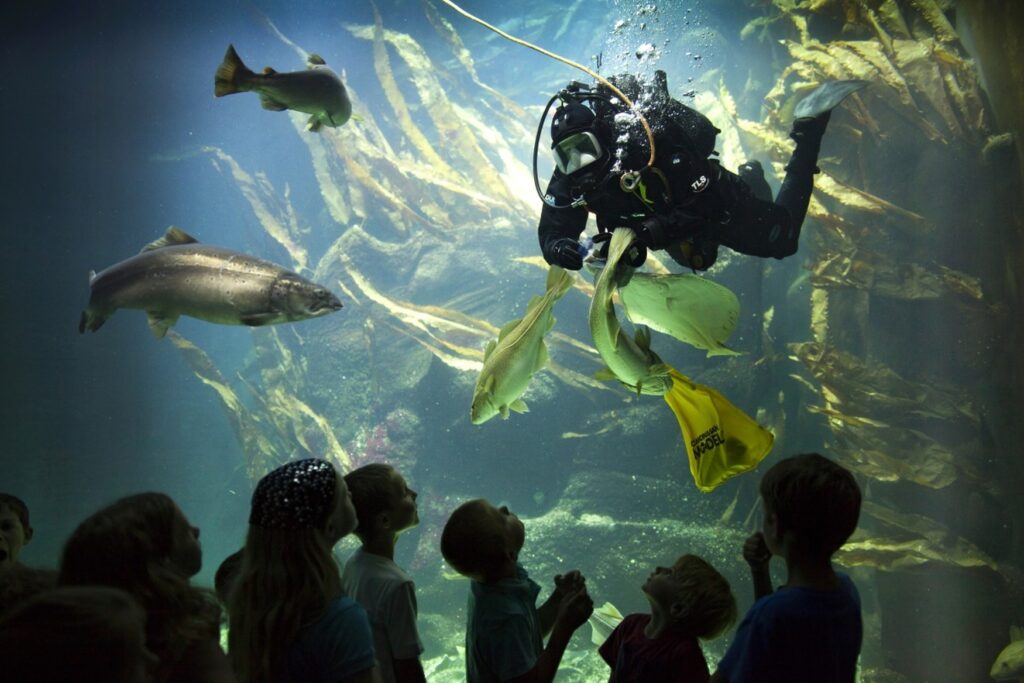
But the Multimar Wattforum is much more than a traditional aquarium exhibition. An interactive journey of discovery through the Wadden Sea World Heritage Site extends over more than 4,000 square meters, from its smallest inhabitants to the large predators. In addition to the saltwater world of the North Sea, there are also encounters with inhabitants of freshwater areas, including the charismatic otter, which, with their playful nature, provide special moments.
Whether tiny mudflat dwellers or large predatory fish, fascinating stories and amazing phenomena can be discovered everywhere. A world that not only impresses, but also helps us understand why the Wadden Sea is one of the most valuable natural landscapes on earth.
